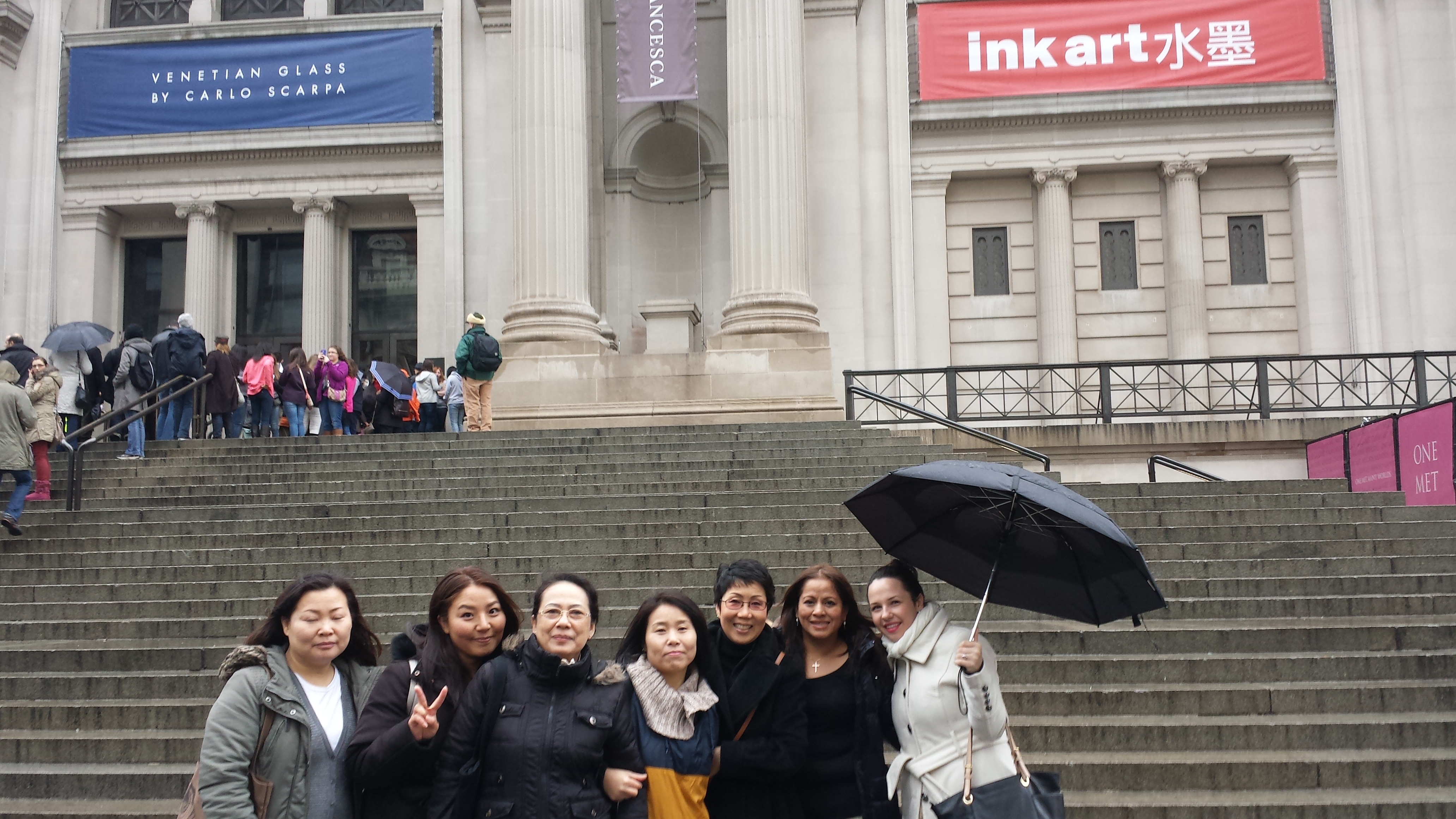Experiencing the Museum: An Instructor’s Perspective

Anida Pobric, an English Language Instructor and the Outreach and Assessment Coordinator for the QCC Adult Literacy Program, implemented the CALTA21 curriculum with her class this past winter. Anida, an immigrant herself, writes about her experience using the curriculum in the classroom and visiting the Metropolitan Museum of Art with her students. On the day of the museum trip, Eileen Hirschfeld, a Metropolitan Museum docent who had attended our CALTA21 professional development institute at El Museo del Barrio, was there to facilitate discussions with Anida’s students in the galleries. Here is what Anida had to say:
My students and I arrived at the Metropolitan Museum of Art on a cold and rainy January morning. We took the Subway from Queens to Manhattan, chit chatting while standing on a crowded train, rocking back and forth every time it came to a stop. For some of my students, this was the first time they were visiting The Met. We arrived before the grand doors opened to the public, so we huddled under our umbrellas in excitement and sipped on coffee we purchased from nearby food trucks.
As a component of our work with CALTA21, this museum trip was only part of a rewarding self-explorative experience. Before that rainy morning, we worked daily on discussing Visual Thinking Strategies about a variety of artwork. As predicted, discussions were a journey of honing our observation skills, improving our vocabularies, and feeling more confident expressing our opinions in English. Less predictably, these conversations took a hold of us in an emotionally powerful way. Each day we were transported to each other’s childhood neighborhoods, remarkable religious services, dinners at each other’s homes in Vietnam, China, Thailand, Colombia. Together, we ate arepas, laughed about playing tricks on our teachers, and empathized about leaving our homelands. These works of art, whose titles and painters will not be named, helped us reach into our secret bag of vocabulary and construct sentences about who we were, who we are and how we define ourselves as immigrants in the United States.
With a simple starting point of “What is going on in this picture?”, we were able to capture each other’s histories and begin to understand each other’s preconceived notions about race, relationships, struggle and happiness. An observation such as “This boy looks happy and healthy” gave way to an enriching conversation about what we each understand happiness and health to look like. –And the opinions varied as much as our fingerprints. We were able to constructively talk about our differences through a complicated identity to which we all related.
At The Met, the first work we talked about was the famous Washington Crossing the Delaware. I overheard my students making remarks like, “This reminds me of coming to the U.S. from Korea when I was in my twenties. I wanted to come here and have a good life.” With statements like these, the painting became something else. It was not just a glorious work of art which we appreciated from afar, it was a gold-framed portrait of our combined experiences as immigrants.
Naturally, I reflected on my own past and the role it has played in shaping my identity as a Bosnian in America. The feeling that overwhelmed me in those moments was that of gratitude. Inspired by art, we spoke in a tongue that was not our own, to appreciate differences and similarities in telling a story about ourselves—that is remarkable.
CALTA21 gave me and the students in my class an educational opportunity to learn about art, each other and ourselves.

